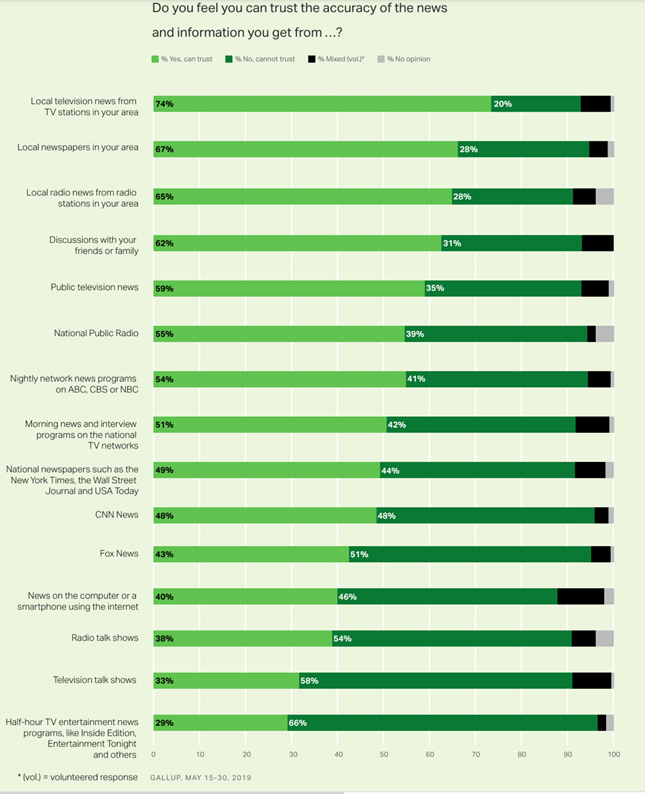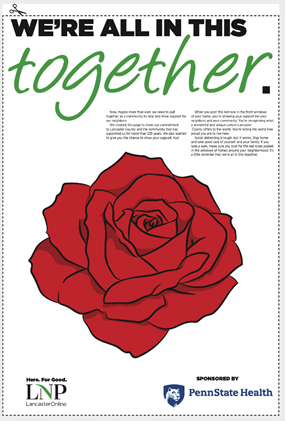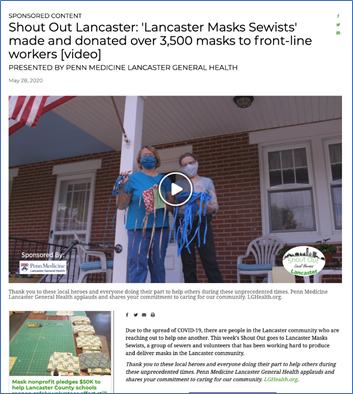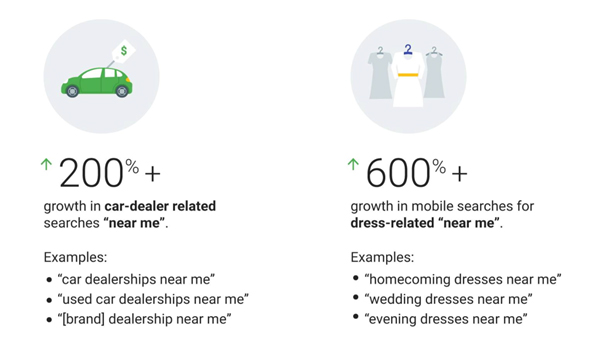
How to Choose a Lancaster County Digital Marketing Agency
It doesn’t matter if you live in Lancaster or other parts of the country. Businesses everywhere have recognized that the marketing world is changing fast, and digital marketing companies are at the heart of this exciting time. Thousands of companies in Pennsylvania and beyond are trying to adapt their sales funnels in ways that take advantage of digital marketing. The COVID-19 pandemic made digital communications more critical than ever, and companies quickly pivoted to offer online orders, better websites, click to order features, and enhanced social media marketing programs.
Technology can be pretty complicated, and digital advertising is no exception. That’s why so many business owners can get overwhelmed when they try to master this medium. Even companies that are highly skilled at using technology, computers, and apps can quickly get frustrated when it comes to digital marketing. And no wonder. Digital marketing services are one of the fastest moving industries in the world right now, and that means practitioners must continuously learn new ways to achieve results.
According to the 2019 Digital Marketing Report from Promethean Research,
“Digital agency competition has grown dramatically in recent years, and we expect it to continue throughout the next 3-5 years. This increase in competition is due in large part to a few key shifts in the industry…the days of just being present in the marketplace being enough to build a business are coming to an end. Brands are demanding specialists, and as technological prowess becomes an even greater differentiator, we’re seeing the market shake out the less capable agencies.”
Thanks to ever-changing technology and ad platforms, even a marketing agency can find it hard to stay up-to-date. That’s why so many businesses are now initiating searches for a reliable digital marketing agency to help them navigate through the recent explosion in online marketing tools and ad platforms. A competent digital marketing agency will not only manage your marketing, they’ll also help you stay on top of news regarding evolving technology audiences, which digital platforms they are using, what advertising tools are available, and how to get the best results from each digital media.
Add regulatory and international political issues to the mix, and things really get complicated. Because digital services are so widespread and are often so effective, it’s been used for good and bad purposes. In attempts to prevent abuse, regulators can force ad platforms to change in an instant. Recently (as-of August 2020) TikTok struggled with political accusations that almost resulted in losing the American audience and American advertisers. Facebook continues to deal with requests to remove or revise sensitive ad targeting data. And American and international legislators persist in their efforts to place restrictions on digital properties.On June 7, 2020, Elizabeth Schultz from CNBC reported,
“The European Commission, the executive arm of the European Union, has imposed a combined $9.5 billion in antitrust fines against Google since 2017, and its boss hints Amazon and Apple might be next in line. Facebook, meanwhile, has been subject to probes from competition and data protection authorities across the E.U. since the region’s strict new set of privacy rules called the General Data Protection Regulation (GDPR) went into effect last year. As U.S. regulators and lawmakers step up their efforts to rein in big tech companies, Europe offers some valuable lessons.”
This can be pretty heavy stuff. So it’s not surprising that digital marketing agencies are continually learning and evolving to keep up with the breakneck pace of change. And to make things even more complex, the backend ad platforms for digital properties such as Google, Facebook, and Twitter are changing even faster than consumer-facing interfaces.
But don’t let this complexity scare you. Digital marketing agencies are available to help Lancaster County businesses make sense of this fast-moving and sometimes confusing world. Whether you sell pizza, Porsches, or pediatric care, you need a smart marketing company to help you create flawless interactions with customers, clients, and patients online. No business is exempt.
According to an article by J. Clement in Statista,
“The Internet has become one of the most vital tools for communication, information, and entertainment in today’s globalized world. As of 2020, more than half of the global population is connected to the Internet, and while some regions still lack the infrastructure that is needed to provide sufficient online coverage, others are seeing internet penetration rates of close to 100 percent.”
Whether you’re considering placing ads on Facebook, Instagram, Twitter, Snapchat, Google ads, YouTube, or another digital ad platform, a digital agency can help. A full-service marketing agency knows what’s happening with the programming environment, how audience parameters are changing, why advertising methodologies are shifting, and who is coming out with the next big advertising innovation.
The advertising rules are changing every day. No wonder big and small companies in Lancaster County are seeking skilled experts to stay on top of these continual changes. When an organization hires a digital marketing agency, it is letting external specialists focus on time-consuming marketing tasks so that the organization can stay focused on other parts of their business.

How Can a Digital Marketing Agency Help Your Business?
The best digital agencies are ones that can act as a true marketing partner. These marketing companies understand how to reach their client’s short-term and long term goals. In order to help firms grow profitably, the digital marketing agency must have a “When you win, we win” mentality.
Good marketing services have many traits in common, including:
1. The marketing company knows how to find the newest and best ways to reach your customers.
Any good digital agency understands that the world is always changing. While it can be hard to keep up, this also means that new opportunities are popping up everywhere. A skilled marketing company keeps track of innovations and continually evaluates them for their clients.
2. Digital marketing is never a one-size-fits-all proposition.
Experienced digital agencies know that marketing services may need to stop or start quickly and are structured to meet these needs. They can scale marketing services up or down quickly, as needed. If a digital marketing agency tries to convince you to use a standardized program, that’s a red flag.
3. Responsible marketing agencies stay informed.
Your marketing agency must understand the value of new digital innovations quickly. They should be able to evaluate and suggest improved approaches or strategies proactively.
4. Your marketing company is producing the right content for the right platform or application.
Each platform uses different interfaces that train users to interact with ads in different ways. A smart digital marketing agency knows how to create content that is adapted to the preferences of each platform to maximize results.
5. The digital marketing company supplies rigorous reporting and optimization so you can make the most of your investment.
Reports are critical if you want to understand how well your investment is working. When your marketing services provide clear ROI, you have the information you need to increase or decrease marketing budgets confidently.
Look for an Experienced Digital Marketing Agency
Digital agencies are popping up everywhere. In fact, digital marketing agencies are one of the fastest-growing segments in business. But how do you find one that’s right for you?
Start by digging into their track record. Are they stable? Can they provide credible client references? Have they been in business for more than a few years? Looks for a digital marketing company that has a history of satisfied customers and a good track record helping companies to grow and succeed.
It’s also important to share your goals with your potential marketing company. Digital marketing guru Neil Patel gives this advice,
“Every business is different, as is every digital marketing agency. Digital marketing agencies usually specialize in one or two areas. And while many of them are “full-service,” they typically prefer projects within their specialty. So the first step in choosing the right digital marketing agency is understanding your goals and what you hope to achieve by working with one. It may be easier to break this down into deliverables, the goal of those deliverables, and the outcome you hope to achieve. Knowing these things helps you communicate what you wish to get out of the project. And when an agency knows what you’re looking for, they know whether they can actually help you without wasting anyone’s time.”
Case studies are another tool a digital marketing company will use to demonstrate their experience. Any marketing agency should be able to supply case studies and convincingly justify their expertise. Do they have certifications such as Google Analytics I.Q., Google Ads Certified, YouTube Certification, or Facebook Blueprint Certification?
Finally, ask about staffing. In a world filled with remote workers and freelance contractors, it’s smart to ask whether the digital marketing agency completes work in-house or if work is outsourced. Do they keep regular business hours? What will your digital marketing company team look like, what are their qualifications, and will you have direct access to them? Will your team be easily reached for questions and change requests?
What Do Digital Marketing Agencies Cost?
If you’ve never worked with a digital marketing agency before, you may be concerned about the costs. However, a good marketing agency will balance those costs by creating new revenue streams and by building your reputation in ways that attract more business. So before you hire an outside agency, make sure you understand your marketing goals and the value of that additional revenue.
The fees from a full-service marketing agency will vary, and will incorporate fees they are charged by Facebook, Google, and others. Pricing changes based on the marketing channels used, the types of services you need from your digital marketing company, their experience and expertise, and more. A young startup may be cheaper, but they may not be able to match the results of a more experienced marketing partner.
When considering cost, weigh your investment against the digital marketing agency’s expertise, flexibility, and track record. The scope of work is also a critical consideration. Scope of work, or a statement of work, should be a written document developed prior to the start of work, that includes the deliverables you are getting from your digital marketing company, the type of work they are doing, and the number of channels they are using.
As a general rule, the more time it takes to complete the work, the more the marketing agency will charge. Using more digital tools and platforms is usually more complicated and time-consuming, and therefore costs more.
However, the best way to gauge costs is to compare your investment to expected results. Any marketing effort should be a tool to increase revenue. It doesn’t matter whether your digital marketing agency is expensive or cheap. If they can’t improve your bottom line, they’re not worth it.
What do Digital Marketing Agencies Do?
While every digital agency is different, most lists of marketing services include some or all of the following specialties. Even if they don’t provide the services in-house, they may partner with trusted resources who specialize in one area of digital marketing services. Here are some of the core competencies clients need.
Customized Marketing Plans
Some marketing agencies offer prebuilt plans that they use for every client. While this can be a cost-efficient marketing strategy, a one-size-fits-all approach rarely gives clients precisely what they need to meet their marketing goals. Digital marketing services should be able to create a unique plan of action designed to improve your results. Every Pennsylvania business has unique challenges and opportunities.
When you work with a digital marketing agency that creates customized plans for each client, you’ll pay for the services you need, and built in ways designed to help you succeed. Look for a full-service digital marketing agency that has cultivated several long-term relationships. Ongoing relationships are often a sign of competency and effectiveness.
In Lancaster County, it makes sense to look for a comprehensive marketing company with strong local ties, like LNP Media Group. As a full-service digital marketing agency, we create plans that use print, digital, video, and more to meet all your marketing needs.

SEO, or Search Engine Optimization
If you want people to visit your website, SEO is absolutely critical. In the digital age, the website is the hub of a company’s communications. A hardworking website can be your best salesperson, biggest catalog, most helpful brochure, and most responsive customer service. And SEO is the most effective way to lead people to your site.
Ranking high on a search engine isn’t easy.
- More than 7.8 billion searches occur each day.
- Over 4 million blog posts are published on the Internet every day.
- As of 2019, there were approximately 1.94 billion websites in the world.
- More than 5 billion pages are currently indexed on the web.
With smart SEO techniques, your digital marketing agency can dramatically increase the visibility of your website and drive more qualified leads to click on your site.
When you interview digital marketing agencies, make sure they understand SEO and are able to execute SEO strategies such as creating interlinking and inbound links, website optimization, increasing indexability of files, performing technical optimization, increasing your sites mobile-friendliness, optimizing for local and “near me” terms, optimizing meta tags, and creating content in ways that increase your website’s search ranking.
Google Search Ads
Many full-service digital marketing agencies offer paid search advertising, also called pay-per-click or PPC. That’s because many businesses have found that paid search is one of the most effective ways to drive more qualified traffic to their website. When your full-service digital marketing agency effectively combines paid search with other marketing tools, your company can increase sales, awareness, and conversion results across the board.
A qualified digital marketing agency can help create paid search plans that are fast, flexible, and customized to your business needs. Whether you’re looking to increase awareness, leads, sales, or inquiries, paid search is one of the best ways to identify and convert qualified prospects.
Google is the largest search engine, accounting for almost 90% of all search traffic. So it makes sense to look for a digital marketing agency that is Google Certified or a Google Partner.
Google Display Ads
While paid search ads are effective, Google Display ads are another powerful tool to include in your marketing arsenal. A skilled digital marketing agency can use Google Display ads to offer a compelling way to engage with your website. Display ads appear on some of the millions of popular websites at a relatively low cost-per-click. Smart digital marketing teams will also help you determine if retargeted ads are appropriate for your business and can program ad delivery in ways that prevent your ads from appearing on websites that are not good fits with your company.
Integrated Campaigns
While some digital marketing agencies like to recommend only one digital medium, good marketing agencies will use a range of tools in ways that integrate with other online and offline marketing tactics, including print ads, social media marketing, and more. A skilled digital agency can provide consistent, integrated campaigns across all channels that help your enterprise meet its marketing goals.
Retargeting Ads
A retargeting ad follows a website’s visitors as they travel to other websites, intending to attract users back to their site, even after they’ve left. An effective digital marketing company can re-engage potential customers by delivering ads that encourage them to return and convert. This kind of consistent retargeting is an effective way to promote repeat visits to websites.
LancasterOnline
LancasterOnline is the #1 news website in Lancaster County, with over 1 million unique visitors each month, and over 10,000 paid subscribers. Digital ads on LancasterOnline ensure your company’s messages are surrounded by well-read, credible, respected content. A skilled full-service digital marketing agency can recommend the best ways to leverage this digital powerhouse, including interactive quizzes, sweepstakes, sponsored content, and contests. Sponsored (or collaborative) content from LancasterOnline is a way for advertisers to seamlessly integrate brand promotions in engaging and informative articles written by the LNP Media Group team. Marketing agencies can also help the client create business directory ads, reveal ads, homepage takeovers, sponsorships, and e-newsletter sponsorships. Your agency will identify the smartest way to reach highly-engaged, local audiences.
Social Media Management and Advertising
The majority of your customers already use Facebook, Instagram, Snapchat, YouTube or Twitter. Social media is a powerful marketing tool and continues to grow in influence and usage. In fact, social media marketing has become one of the most influential media available. Experienced digital marketing agencies will leverage social media marketing tools such as laser-focused audience targeting tools, tracking pixels, retargeting pixels, video marketing, in-app advertising, custom audiences, and lookalike audiences.
Advanced Audience Targeting
Using sophisticated targeting capabilities on Facebook, Instagram, Google Display, Twitter, YouTube, and more, your digital marketing company should be able to create precise, customized social media audiences who are most likely to make purchases from your business. By selecting the right combinations of demographics, interests, hobbies, locations, behaviors, and even your own email lists, social media ads can be delivered to highly-qualified audiences. A capable marketing company will monitor and optimize social media ads using a/b testing, detailed analytics, and performance dashboards.
Video Advertising
Video is fast becoming one of the most effective ways to share information and persuade people on social media. Online consumers spend almost six hours per day in front of videos. 85% of the U.S. online audience watches videos. Millennials watch more video vs. other age groups. And there’s a lot to view. In fact, more than 8 billion video views occur on Facebook alone, every day.
So it’s no surprise that video marketing is one of the most effective ways to drive consumer engagement. Social video ads are the #1 way consumers discover new businesses from which they later make purchases.
An experienced full-service digital marketing agency will be able to help you create high-quality, affordable video. LNP Media Group’s video team can shoot on location or in our state-of-the-art video studio in the heart of downtown Lancaster. We create videos on behalf of our digital marketing clients, but we also produce videos for other marketing agencies.
Mobile Marketing and Geo-fencing
All digital agencies should demonstrate a deep understanding of mobile marketing. Mobile internet use has exploded in recent years. Advances in internet speed, mobile display, and cell phone costs mean that mobile use will continue to grow in the coming years.
CNBC correspondent Lucy Handler reported,
“Almost three quarters (72.6 percent) of internet users will access the web solely via their smartphones by 2025, equivalent to nearly 3.7 billion people…2 billion people currently access the internet via only their smartphone, which equates to 51 percent of the global base of 3.9 mobile users.”
In addition to ensuring a mobile-friendly website, mobile marketing includes mobile-only ad delivery. Savvy digital marketing agencies use geo-targeted mobile advertising, or geo-fencing, to target audiences based on virtual geographic boundaries. Geo-fencing allows a marketing agency to identify where your target audience will be, then deliver ads to their mobile device once they enter or leave the geo-fenced location.
Content Marketing
Today’s full-service marketing agency must understand how to leverage content marketing strategies. In addition to creating consistent, compelling messaging, content marketing is a long-term strategy that focuses on building strong relationships through relevant, high-quality content.
Adept digital agencies should be able to develop and execute marketing campaigns that include professional, engaging content that leverages your business’s key selling points. These marketing agencies will use content to drive people to your website, social media page, or a customized landing page. Whether you want your prospects to fill out a form, opt-in to email newsletters, enter a contest, take a quiz, or request an appointment, top-level content keeps your customers moving through the sales funnel.
Your digital marketing agency should be able to integrate content marketing with blogs, videos, infographics, email marketing, paid ads, and user-generated content.
Email Marketing
Some digital marketing agencies don’t bother with email marketing. They don’t understand that email marketing is an effective and efficient digital strategy if you can reach highly-qualified prospects. In fact, people like reading about your offers in emails. 60% of consumers prefer to be contacted by brands through email. When recipients opt-in to receive email marketing, it’s not only 100% CAN-SPAM compliant, but also more effective: every $1 spent on email marketing has an expected ROI of $44.
A smart full-service marketing agency will ensure your email message reaches valuable prospects. For example, LNP Media Group offers access to 200 million highly-targeted, specific “intenders” who are ready to engage with your offer.
Make sure your agency’s marketing services include guaranteed performance. LNP Media Group guarantees a minimum open rate of 8% or a click rate of 1%. If not met, the campaign will be delivered again at no charge.
Custom Landing Page Design
The average landing page conversion is about 2.35%, but well-designed landing pages can convert 11% or more. Make sure your agency’s digital marketing services include designing and programming custom landing pages to complement conversion-driven campaigns.
The most effective landing pages may include forms to capture leads and user data. Email or retargeting ads can drive to a landing page with a call-to-action and engaging content to drive conversions. Your digital marketing company should understand how to design useful landing pages and have experience with exceptional conversion rates.
Web Design and Optimization
A website is the beating heart of your digital marketing program. It’s one of the most potent and influential communications your prospects and customers will see, so make sure it’s working well and programmed to meet your marketing goals.
Today’s digital consumer expects a vibrant, professional, easy-to-navigate website. Slow load times, difficult navigation, non-working links, small text, and mobile issues can convince your prospect to leave your site and look for other options. If your agency’s digital services don’t include continual optimizations of your website, you’re missing a significant sales and marketing opportunity.
A good digital marketing agency not only creates attractive websites, but they also understand how to program for SEO, are skilled at including conversion tools such as forms or click-to-call buttons, and they know how to drive qualified users to your website.
If your website isn’t operating at optimal efficiency, it may be time to update or replace it. Choose a digital marketing agency with a history of building hardworking websites. Make sure your marketing agency can demonstrate that their sites are visited frequently and are meeting client objectives.
E-Commerce
Online commerce is more common than ever. More and more people are going online to buy everything from coffee to Corvettes. However, building an online commerce site requires deep expertise in online catalogs, SEO, e-commerce platforms, exceptional reporting, and associated marketing programs to attract or retarget site visitors.
When you’re looking for a digital marketing agency to help you create or improve your e-commerce, make sure they have a significant team at their disposal. Online commerce is rarely a one-person job. Ask about their experience building or optimizing other e-commerce sites, and make sure the digital marketing company has worked extensively with e-commerce platforms like WooCommerce, Shopify, Big Commerce, and Weebly.
Finally, ask about reporting procedures. Discuss your e-commerce goals, your limitations, what you need to know, and how you prefer to get reports. Any e-commerce program will need to be regularly monitored and optimized, so avoid marketing agencies with a “set it and forget it” attitude.
OTT and CTV
As any good full-service digital marketing agency can tell you, digital marketing isn’t limited to computers and mobile phones. More and more smart TVs are getting into the game with OTT and CTV.
OTT is an acronym for “over-the-top.” Marketing agencies use the term to describe the delivery of film, video, and TV content via the Internet and “over-the-top” of cable, in addition to or instead of standard cable or satellite services.
Connected TV, or CTV, is the term used by digital marketing agencies to describe the integration of Internet and enhanced web features that can be seen on new-generation TV sets and include streaming services like Netflix, Hulu, YouTubeTV, and Disney +.
Despite its rapid growth, OTT and CTV advertising can be confusing, even for seasoned marketers. An experienced digital marketing agency will understand how to adapt creative and messaging while continually tracking analytics and budgets.
Whether you choose OTT, CVT, or both, make sure your marketing agency provides transparency, measurement, and skilled media targeting.
Transparent Reports
When you’re looking for a full-service digital marketing agency to manage your SEO, social media, website, e-commerce, email marketing, and marketing strategies, you want to find a partner who can help you reach more customers and generate more revenue. Efficient, transparent reporting plays a critical role in determining how well your digital agency is achieving your goals. .
A skilled digital marketing company will measure the performance of your digital campaigns by tracking a variety of measurements that can include clicks, views, shares, conversions, and even sales. By combining tools such as Google Search Console, Google Analytics, tracking code, UTM codes, and digital dashboards, a smart digital agency will accurately track your campaign metrics in detail and provide you with recommendations for improvement.
How a Digital Agency Knows if Your Campaign is Working
Before you choose a marketing agency, take time to discuss measurements. Your business deserves regular reporting delivered in an easy-to-understand format. All reports should include conversions or goals and connect performance back to fees and investments. However, each platform offers different types of reporting. Here’s an overview of basic reporting parameters.
Website Reporting
Your marketing agency should deliver website reports at least once a month. Those reports should include key metrics, including unique visitors or users. A unique user is a single person who visits a site. This number will differ from total visits, which includes multiple visits from a single person.
A responsible digital marketing company will also include details of those visits that should consist of time spent on the site, the average time spent on a page, how many pages were viewed on average per visit, and the traffic source (another website, search, social, etc.)
Your digital agency must share the bounce rate (people who visit then immediately leave) and the click-through rate (people who click on links to key destinations.) Ask for numbers of new and returning visitors. And if your website features e-commerce, links to e-commerce, or submits leads, ask your marketing services to include an ROI for click-throughs.
Social Media Key Metrics
All social media platforms provide a variety of measurement tools, which allows your digital agency to provide detailed reporting. Social media reports should include unique visitors to your page, number of followers, and increases or decreases compared to the previous month. Platform reports should also include views, comments, likes, or shares.
For organic posts, smart digital marketing agencies will report on the best-performing content and make recommendations for future content.
Digital services need to analyze cost per click, costs per thousand reach or impressions, and the click-through rate in all social media ad reports.
Email Marketing Metrics
When you work with a full-service marketing agency on email marketing, reports will include and open rate, clicks, and cost per clicks. Good marketing services will compare your campaign’s performance to industry averages. And if clicks are associated with sales, leads, or participation, your digital agency should provide real ROI. If your agency provided the email list, make sure your reports include evaluations of list quality and, when appropriate, recommendations to improve targeting or list quality.
SEO and Search Marketing Metrics
Digital agencies use SEO and search marketing to increase site traffic, so any report should include clear measurements on increases in site traffic. Effective SEO will move you up the search engine rankings, so make sure your reports map out the ranking per keyword, as well as views, organic traffic, direct traffic, and details on the number of calls and how locations requests were completed.
e-Commerce Metrics
When you invest in an e-commerce program, you’re looking for sales. Any digital marketing agency should provide clear, concise reports for online sales, including conversion values and revenue. Your digital agency needs to include clicks and views in their reports, as well as data on new and return customer traffic.
Which Lancaster Digital Marketing Agency is Right for You?
We all know digital activity has exploded. In the last decade, billions of consumers have installed in-home Wi-Fi, visited websites, read blogs, opened social media accounts, clicked on emails, viewed online videos, watched CTV and OTT ads, and purchased online. Digital marketing is mainstream. Your grandma has a smartphone and Facebook account, and your two-year-old spends time on an iPad.
At the 2017 Interactive Advertising Bureau (IAB) Annual Leadership Meeting, P&G’s Chief Brand Officer, Marc Pritchard, told audiences in Hollywood, Florida, “The days of digital getting a pass are over.” After spending time explaining why digital marketing agencies must get better at reporting, he made it clear that digital advertising must make direct connections between marketing efforts and business impact.
However, three years later, many digital marketing agencies still don’t explain how their digital strategies are helping their clients’ business.
When you’re looking for a marketing agency, make sure your agency team is able to report on clicks and impressions. Challenge your digital marketing agency to tie marketing to tangible business outcomes.
How can you do that? Make sure your marketing agency is staffed with seasoned experts who understand the entire marketing journey, not just the task at hand. Discuss turnover and the stability of the company. Ask questions. Look at reports from other clients. Find people who fit well with your team, your business, and your working style.
When you’re ready to look for a new marketing agency, consider LNP Media Group. We’re part of a 200-year-old tradition of content creation and advertising. We’re backed by a trustworthy company with deep employee reserves and reliable resources. We know Pennsylvania and Lancaster County, but we also understand business strategy, e-commerce, web development, video, social media, content marketing, offline marketing, and more. Ready to talk? Click here to set up a time to talk about what we can do to help you grow your business.











 Google Premier Partner
Google Premier Partner Pageview
Pageview